
The Minister for the Cabinet Office is a position in the Cabinet Office of the United Kingdom. The minister is responsible for the work and policies of the Cabinet Office, and since February 2022, reports to the Chancellor of the Duchy of Lancaster. The position is currently the third highest ranking minister in the Cabinet Office, after the Prime Minister and the Chancellor of the Duchy of Lancaster.

Patrick Bosco McFadden is a British politician who has served as Chancellor of the Duchy of Lancaster since July 2024. A member of the Labour Party, he has been Member of Parliament (MP) for Wolverhampton South East since 2005. McFadden has previously held various junior ministerial positions and shadow portfolios in his parliamentary career between 2005 and 2024.

The Conservative government of the United Kingdom that began in 1957 and ended in 1964 consisted of three ministries: the first Macmillan ministry, second Macmillan ministry, and then the Douglas-Home ministry. They were respectively led by Harold Macmillan and Sir Alec Douglas-Home, who were appointed by Queen Elizabeth II.
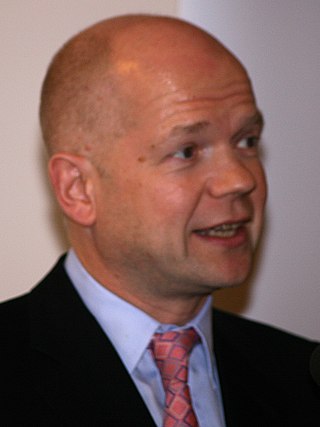
The Shadow Cabinet appointed by Conservative Party leader William Hague was the Official Opposition Shadow Cabinet from 1997 to 2001. Following his initial appointments in June 1997, Hague reshuffled the Shadow Cabinet five times before his resignation as leader following defeat in the 2001 general election.
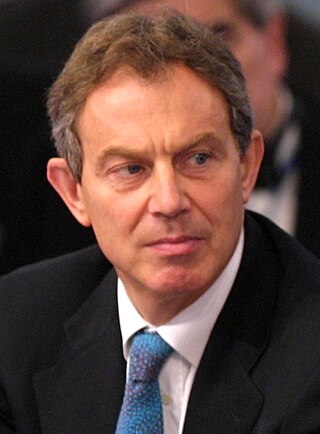
Following poor results for the Labour Party in the local elections in England on 4 May 2006, British Prime Minister Tony Blair held a cabinet reshuffle the following day.
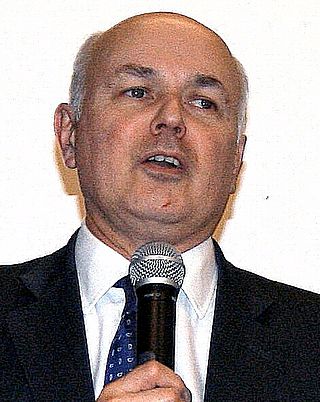
The UK Shadow Cabinet was appointed by Conservative Party leader Iain Duncan Smith. Following his initial appointments in September 2001 Smith managed three reshuffles before his resignation as leader in November 2003.
The Gershon Efficiency Review was a review of efficiency in the UK public sector conducted in 2003-4 by Sir Peter Gershon.

The Exchequer Secretary to the Treasury is a junior ministerial post in His Majesty's Treasury, ranked below the First Lord of the Treasury, the Chancellor of the Exchequer, the Chief Secretary to the Treasury, the Paymaster General and the Financial Secretary to the Treasury, and alongside the Economic Secretary to the Treasury. It ranks at Parliamentary Secretary level and the holder does not attend Cabinet.

The Canningites, led by George Canning and then the Viscount Goderich as First Lord of the Treasury, governed the United Kingdom of Great Britain and Ireland from 1827 until 1828.
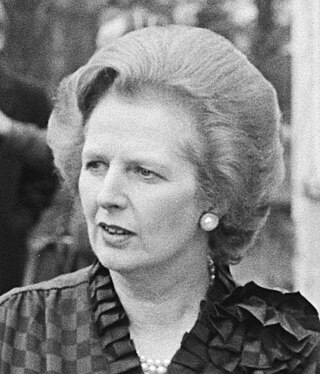
Margaret Thatcher was Prime Minister of the United Kingdom from 4 May 1979 to 28 November 1990, during which time she led a Conservative majority government. She was the first woman to hold that office. During her premiership, Thatcher moved to liberalise the British economy through deregulation, privatisation, and the promotion of entrepreneurialism.

Margaret Thatcher was Prime Minister of the United Kingdom from 4 May 1979 to 28 November 1990, during which time she led a Conservative majority government. She was the first woman to hold that office. During her premiership, Thatcher moved to liberalise the British economy through deregulation, privatisation, and the promotion of entrepreneurialism.

Margaret Thatcher was Prime Minister of the United Kingdom from 4 May 1979 to 28 November 1990, during which time she led a Conservative majority government. She was the first woman to hold that office. During her premiership, Thatcher moved to liberalise the British economy through deregulation, privatisation, and the promotion of entrepreneurialism.
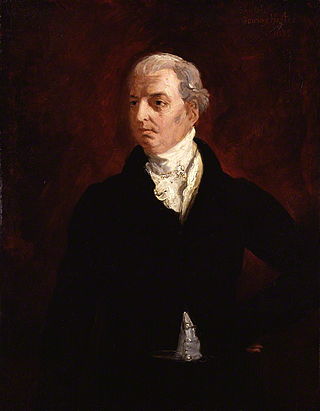
Robert Banks Jenkinson, 2nd Earl of Liverpool was invited by the Prince Regent to form a government on 8 June 1812. This is a list of members of the government of the United Kingdom in office under the leadership of Lord Liverpool from 1812 to 1827. He was appointed Prime Minister of the United Kingdom by the Prince Regent after the assassination of Spencer Perceval.
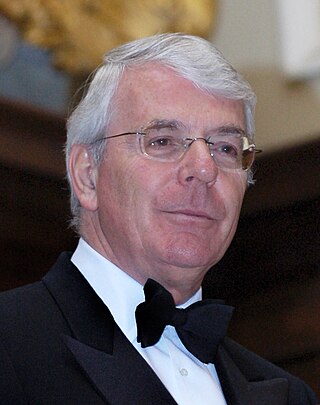
The 1992 Dissolution Honours List was gazetted on 5 June 1992 following the advice of the Prime Minister, John Major.

The 1987 Dissolution Honours List was gazetted on 30 July 1987 following the advice of the Prime Minister, Margaret Thatcher.

The third Blair ministry lasted from May 2005 to June 2007. The election on 5 May 2005 saw Labour win a historic third successive term in power, though their majority now stood at 66 seats – compared to 167 four years earlier – and they failed to gain any new seats. Blair had already declared that the new term in parliament would be his last.

The minister of state for Brexit opportunities and government efficiency was a ministerial office in the Cabinet Office in the Government of the United Kingdom. This position was created by Prime Minister Boris Johnson in February 2020 as a renaming of Minister of State for the Treasury with new responsibilities. It was a joint office with HM Treasury and the Cabinet Office from 2020 to 2022. After Jacob Rees-Mogg was appointed in February 2022, the role was made a full member of the Cabinet; he was based solely at the Cabinet Office. Following Rees-Mogg's departure on 6 September 2022, to become Secretary of State for Business, Energy and Industrial Strategy under Liz Truss, no replacement was appointed and office was abolished.























